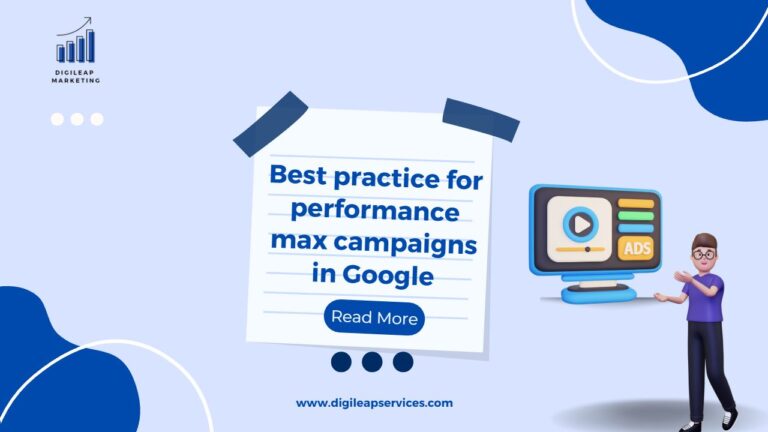Pinterest analytics: Best ways to use it
I’m going to assume that you were trying to figure out how to utilize Pinterest analytics when you came to this page.
Let’s be clear that receiving Pinterest traffic to your website is the only thing that matters to you before we delve too far into Pinterest analytics stats.
Get Pinterest users to visit your site first, regardless of whether you need the traffic to profit from advertisements, affiliate offers, or even your items.
This is not an attempt to describe every metric that Pinterest displays in your business account in depth in this piece. The majority of the information displayed by Pinterest is solely significant for Pinterest and not for you as the website’s owner.
Why then do I waste our time and do you more harm by confusing you with vanity metrics? I’ll simply bring these up to demonstrate why you may completely disregard the majority of the information Pinterest Analytics presents.
WHAT ARE PINTEREST ANALYTICS?
To view Pinterest statistics, you must log in using a Pinterest business account. If you are currently using a personal account, you can change your account to a business account and view your first data in Pinterest analytics in approximately a week.
You may either go directly to this page at https://analytics.pinterest.com/ after you are logged into your business account or click the Analytics link in the left corner and select Overview to start with.
IMPRESSIONS ON PINTEREST ANALYTICS: WHAT DO THEY MEAN?
The first indicator you’ll notice in your profile and website analytics for Pinterest is impressions. But you shouldn’t pay too much attention to impressions because they don’t directly relate to traffic.
Impressions indicate the frequency with which a Pin from your profile was shown on Pinterest (this includes category feeds, search results, and Home feed).
The number of users that viewed your pins within the chosen period range is available on Pinterest under average daily impressions and average daily viewers. This includes all of the Pins you have saved to Pinterest as well as any Pins that other users have saved from your website and connected accounts.
I forewarned you that Pinterest frequently displays vanity numbers, of which this is one.
How many times your pins have been viewed doesn’t matter. How many clicks these impressions produced is what counts.
Solely consider impressions to determine how successfully your pins are generating click-throughs. On the account level, it would be difficult to get a broad picture because certain pins can perform 100X better than others making an average only leads to inaccurate conclusions.
I advise looking at Impressions at the pin level. Something could be amiss with your pin picture if some of your pins have high impressions but very few clicks. Perhaps you ought to add a text overlay, spice up your pin, or include a call to action.
PINTEREST ANALYTICS DASHBOARD UNDERSTANDING
Let’s start with your Pinterest Analytics Overview tab.
Here, you may get information about your domain’s Activity, Reach, and Profile.
The number of views saves, and clicks on the pins you saved are shown in your Pinterest profile statistics.
Individuals you reach display the number of people who have viewed or acted upon your pins on Pinterest (30-day aggregate). You may compare your monthly views to the monthly engaged audience in this report.
The average daily impressions saves and clicks for Pins pointing to your website are displayed under activity from your domain.
The Overview page also displays a list of your website’s best-performing Pins, although, in this instance, you only see the top 5 pins by impressions. You are unable to view the top-performing pins based on clicks using this measure.
From the Overview, you may check additional information on each of these measures.
Metrics’ Explanation of Pinterest Analytics
Since this does not represent how pins that connect to your website are performing, I wouldn’t recommend spending more time on Profile analytics.
I won’t go into detail about Profile analytics numbers. Particularly considering that in website analytics, they are all referred to by the same name.
What do we discover here?
Impressions: They represent the frequency with which a pin from your website has been displayed in the search results, category feed or home feed on Pinterest. To determine whether pins from your profile are been seen, I would solely use this number to compare with your profile impressions contrasted to whatever you repin from other sites. However, being displayed does not guarantee clicks or saves.
Saves: When a pinner saves pictures to their board, it is indicated by the word “Saves.” This measure is a crucial determinant of whether consumers find your material engaging or not. Furthermore, a significant ranking component on Pinterest is the number of saves (more commonly known as repins). Check the top pins in the search results for any phrase on Pinterest to see how many times they have been repinned.
Clicks: They represent the volume of traffic coming from Pinterest to your domain. I think it also affects the popularity and ranks of pins on Pinterest as one of the user engagement aspects.
Original Pins: This metric shows how frequently people have manually uploaded pins with links to your website or used hover save buttons to create original pins from your website. I have observed on Pinterest a direct relationship between the number of unique pins and viral impact.
All Time: This is a fairly fascinating report that displays the most popular pins from your domain over time, including those that have been shared most frequently, rank well in search results, and are called Power Pins. They are Pins with a lot of clicks, saves, and other interactions.
The concept of displaying pins that do well in searches is fantastic. However, Pinterest must put a lot more effort into this report as it is now completely useless:
- It doesn’t display the Pinterest term that each pin ranks.
- It’s not an indication of how high the pin is located.
- Additionally, many of the pins I discovered for this study are not widely used, and I was unable to identify them in search results for any pertinent terms.
The native saves button on Pinterest is called “Save.” You can track how frequently visitors save pins from your website if you use this button.
The top-performing lists for impressions, saves, and clicks are as follows: (for the last 30 days only. The calendar of the report’s report can be changed; however, these lists will always display the best performers from the previous month):
Top 50 performing pins or top pins (can be filtered by impressions, saves, and clicks).
Top Board is a list of the top 50 boards, which may or may not be your boards (this report also includes the boards of users who have saved your pins). They may also be filtered by clicks, saves, and impressions.
Views of the Pinterest audience
When you need to pitch for a sponsored post, I find the information in the Audience Analytics report helpful because it displays the demographics and interests of your audience on Pinterest.
Demographics display your audience’s location (country or metro area in the US), language, gender, and preferred devices.
Interests & Categories
This report reveals the subjects and areas your audience is most interested.
For instance, my audience is most interested in diets and nutrition under the health category.
You may compare the level of interest in a given subject among your audience and the rest of the Pinterest audience using the Affinity statistic in this report.
BEST FREE AND PAYING PINTEREST ANALYTICS TOOLS
Native Pinterest analytics are the first thing you can utilize. Once more, only a corporate account may access Pinterest Analytics. So here are some other tools to track analytics.
Google Analytics Reports: Pinterest Traffic Tracking
I use Google Analytics more frequently than Pinterest Analytics on the platform to monitor my Pinterest progress.
That’s because I’m more concerned with the traffic Pinterest sends to my blogs than purely aesthetic metrics like Pinterest impressions or viewership.
There are several locations where you can discover Pinterest Analytics in Google Analytics:
1. Select Pinterest under Acquisition >> Social >> Network Referrals.
Here is a list of articles that receive the most traffic from Pinterest. Clicking on a certain article will provide the specific pin URLs that will increase traffic to that post.
2. Click Acquisition, All Traffic, and Referrals.
A list of pin URLs with higher Pinterest traffic may be found here.
Pinterest analytics using Tailwind
You get full access to Pinterest Analytics if you use the commercial version of Tailwind to schedule pins.
You may receive a free month of Tailwind.
The Insights tab in Tailwind is where you’ll locate metrics.
Profile Performance, which informs you of the general “health” of your account, is the first item you’ll notice. Such as the number of comments, repin rate, and follower growth.
If you want to view the entire amount of Pinterest repins, comments, and followers, you must use Tailwind analytics.
The following intriguing pieces of information aren’t included in Pinterest Analytics:
Your virality score is the total number of repins (saves) you have gotten divided by the total number of pins you have ever saved on Pinterest.
Divide your total repins by all your pins to get your engagement score, which is then multiplied by a thousand followers.
The percentage of your Pins with at least one Repin is known as the Engagement Rate.
Insights from a Tailwind Board
In Pinterest’s native analytics, you can also see which boards are most popular, but Tailwind Analytics offers more information, including scores for each board’s virality and engagement.
Both boards and group boards may be evaluated using the information from Board Insights. The decision to leave or archive some group boards is thereafter up to you. I explained why it’s important to evaluate group board performance.
In Tailwind Analytics, cite Inspector.
Pin Inspector displays statistics from your most recent 5000 pins, and the good news is that Tailwind metrics will monitor pins you manually saved.
Since your audience is actively engaged with these issues, this report may be extremely helpful in identifying them and helping you develop additional content around them.
When you locate a list of your domain’s top-performing Pins, you have the option of rescheduling them immediately or adding them to your Tribes.
FINAL COMMENTS (Conclusion)
I’d like to provide you with a brief overview to help you understand as this post contains a lot of information:
Don’t obsessively track your achievement on Pinterest with Pinterest Analytics. The platform’s most crucial metrics come from Pinterest’s native analytics. What matters to you is the volume of visitors you receive, which Google Analytics makes easier to measure.
To increase traffic, use Pinterest Analytics to see which themes generate the most engagement and create additional material around those topics.
You can view certain metrics with Tailwind Analytics that are not available through Pinterest’s built-in analytics.












